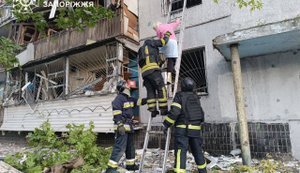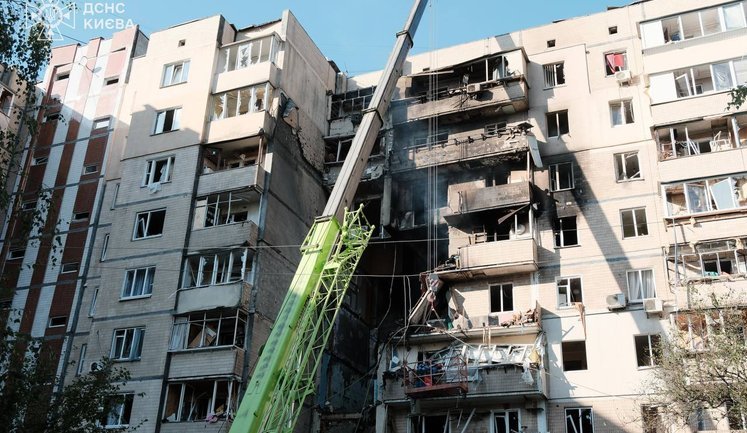In recent reports, Interior Minister Ihor Klymenko highlighted crucial security events affecting Ukraine. A building collapse in Svyatoshinskyi district has led to rescue operations, with fire service efforts spanning over 1,000 square meters already underway. Meanwhile, Ukraine suffered another massive attack from Russia. Kyiv endured significant damage, with 500 rescuers and 1,000 police officers deployed for rescue missions. These developments underscore the ongoing security challenges, intensifying pressure on internal authorities to maintain public safety amidst wartime conditions. Klymenko continues to provide detailed briefings, stressing the importance of law enforcement reform in Europe's integration efforts.
What actions are being taken by Klymenko after the collapse in Svyatoshinskyi district?
Following the building collapse in the Svyatoshinskyi district, Interior Minister Ihor Klymenko has initiated extensive rescue operations. Emergency teams are on the scene to search for and potentially rescue individuals trapped under rubble. This immediate response highlights the necessity of rapid intervention by city services in times of infrastructure failure, a critical component of maintaining urban safety during the ongoing conflict.
How is Ukraine's capital responding to recent Russian attacks under Klymenko's supervision?
Under the supervision of Interior Minister Ihor Klymenko, Kyiv is coordinating a substantial response to recent Russian attacks. The city has mobilized 500 rescuers and 1,000 police officers to manage site operations. Their primary objectives are to extinguish ongoing fires, conduct search and rescue missions, and secure affected areas to prevent further civilian casualties. This coordinated effort reflects the serious nature of these threats and the importance of decisive action to restore safety and order.
What measures has Klymenko proposed to combat crime amidst ongoing wartime conditions?
In a bid to address crime under the prevailing wartime conditions, Interior Minister Ihor Klymenko has proposed several measures aimed at enhancing law enforcement capabilities. This includes strengthening patrols in high-risk areas, deploying additional resources for intelligence gathering, and focusing on organized crime networks that might exploit the current crisis. These proposals aim at maintaining public order and ensuring the safety of Ukrainian citizens during turbulent times.
What are the implications of recent massive attacks on Kyiv according to Klymenko?
According to Interior Minister Ihor Klymenko, the recent massive attacks on Kyiv have severe implications. These include significant infrastructure damage, increased civilian casualties, and heightened demand for emergency services. These attacks not only represent a clear escalation in hostility but also place immense strain on state resources, highlighting the necessity for enhanced defensive measures and international support to safeguard critical infrastructure and civilian life.
How is the repatriation of soldiers' bodies managed according to Klymenko?
Ihor Klymenko discusses the sensitive process of repatriation of soldiers' bodies as a crucial humanitarian act. The Ukrainian government is committed to returning bodies with dignity, ensuring every effort is made for accurate identification, even when this takes extended periods. Protocols are carefully followed, respecting international agreements, while facilitating final goodbyes for families who have paid the ultimate sacrifice. This reflects Ukraine's ongoing commitment to honoring its deceased soldiers even amid the chaos of war.
































































